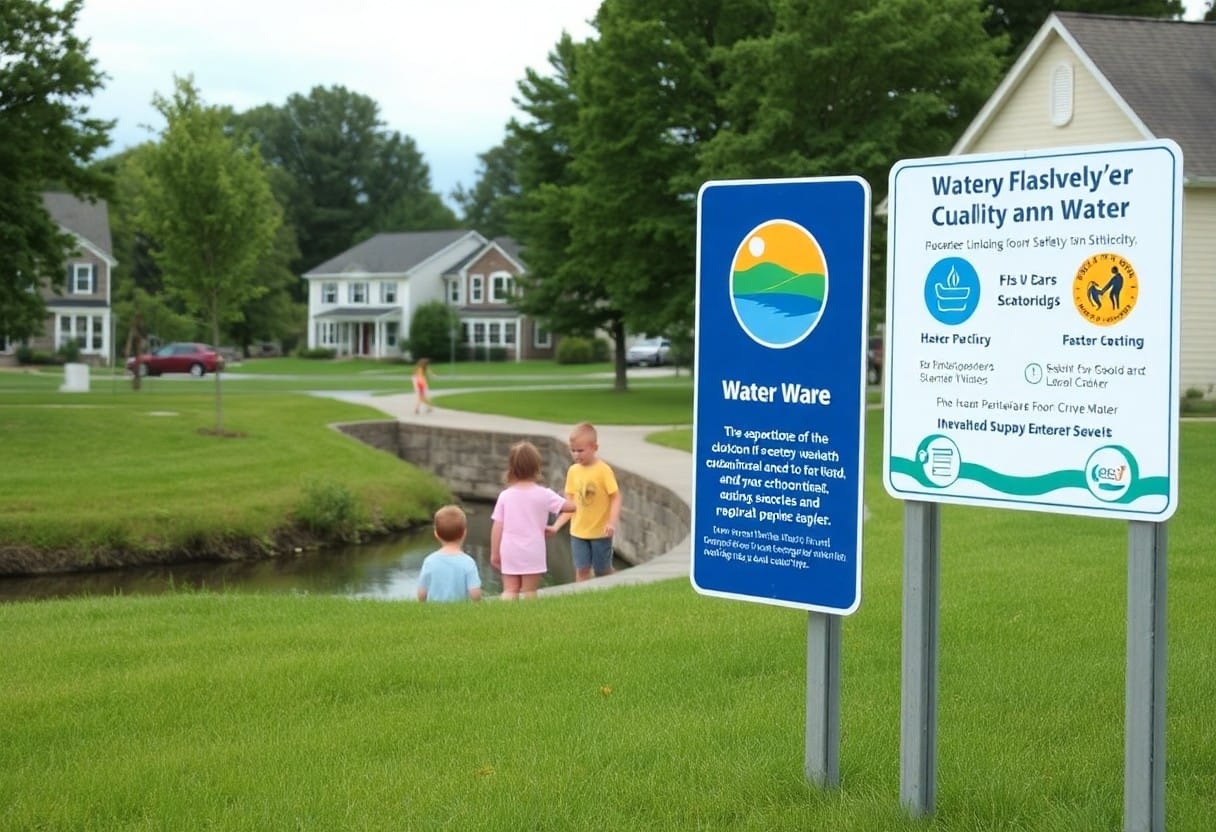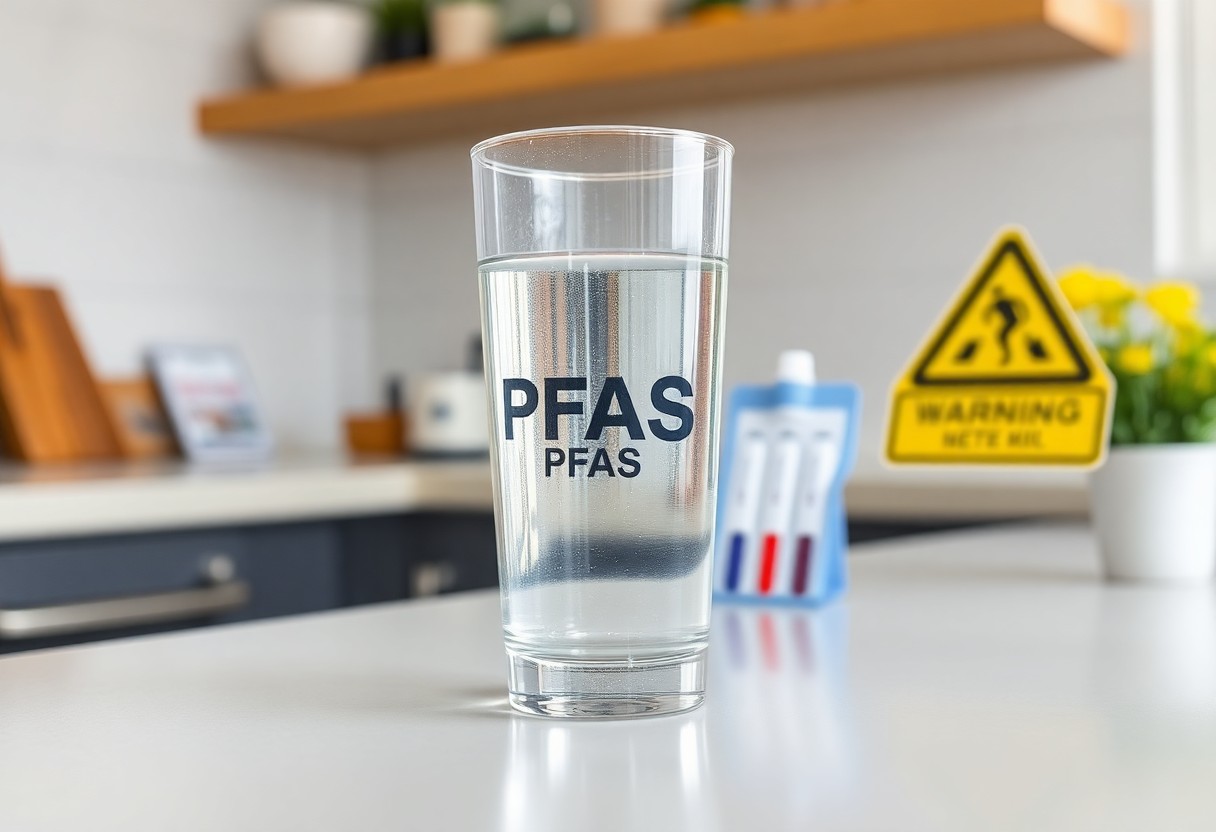It’s important to understand the relationship between Chemours Chemical Company and the Cape Fear River, as this connection can directly influence your family’s health and safety. Located in North Carolina, Chemours has faced scrutiny over its chemical discharges into the river, raising concerns about environmental contamination and water quality. In this post, we’ll explore how these chemical pollutants may impact your drinking water, local wildlife, and overall community well-being, ensuring that you are informed about what these developments mean for your family’s health.
Overview of Chemours Chemical Company
To understand the impact of Chemours Chemical Company on your family and the surrounding environment, it is vital to have a clear grasp of its history, products, and operations. Founded in 2015 as a spin-off from the chemical giant DuPont, Chemours is primarily focused on producing a variety of industrial chemicals and materials. With headquarters in Wilmington, Delaware, Chemours has grown to become a major player in the chemical industry, engaging in research and innovation to provide solutions across several sectors including agriculture, electronics, and clean energy.
History and Background
Among the significant chapters of Chemours’ history is its formation in July 2015, which marked a strategic shift in how the company approached its chemical production methods. As a successor to the legacy of DuPont, Chemours has inherited numerous assets and liabilities, including those related to environmental concerns. The company’s establishment coincided with a broader push toward sustainability and environmental responsibility in the chemical sector, leading to both opportunities and challenges as it sought to create a distinct identity in the marketplace.
Key Products and Operations
Across its diverse portfolio, Chemours manufactures a range of vital products, with a focus on fluoroproducts, titanium technologies, and chemical solutions. These products are integral to various applications, from household goods to industrial processes. Chemours plays a pivotal role in developing innovations that cater to the needs of multiple sectors, including automotive, mining, and electronics. As a result, the company’s operations extend across the globe, contributing to both local economies and international supply chains.
Hence, it is important for you to consider how Chemours’ product offerings might affect you directly or indirectly. For instance, their fluoroproducts are utilized not just in manufacturing but also in everyday items such as refrigerants and non-stick coatings. Additionally, the company’s titanium dioxide is used in various applications, including paints and coatings that you may encounter in your home. Understanding these operations gives you insight into the potential implications of Chemours’ practices on your health and your environment.
The Cape Fear River: An Environmental Overview
If you live in the Cape Fear region, you are part of a vibrant ecosystem that hosts a diverse array of wildlife and plant species. The river itself serves as an necessary artery for both the environment and the communities along its banks. However, human activities, including industrial operations, have raised concerns regarding pollution levels and their impact on the natural surroundings. Understanding the ecological health of the Cape Fear River is necessary for safeguarding your family’s well-being and preserving the beauty of this important waterway.
Ecosystem and Wildlife
An evaluation of the Cape Fear River reveals a complex ecosystem that supports numerous species of fish, birds, and other wildlife. The wetlands along the riverbank provide critical habitat for many aquatic and terrestrial organisms, playing a vital role in maintaining biodiversity. Species such as the American alligator, various migratory birds, and a wide range of fish can be found here, offering opportunities for fishing, birdwatching, and enjoying nature with your family. However, threats from pollution can disrupt these ecosystems, affecting not only the wildlife but also the natural balance that supports life in the area.
Importance to Local Communities
At the heart of many local communities, the Cape Fear River serves as a resource for recreational activities, economic growth, and cultural heritage. From fishing and boating to community events centered around the river, it plays a significant role in your family’s lifestyle and enjoyment of the outdoors. The river also supports local businesses that rely on its health for tourism and fishing industries. A thriving river ecosystem means a thriving community, making it imperative for you to stay informed about any changes that might impact water quality and recreational safety.
With the Cape Fear River being integral to your local economy and lifestyle, it is important to advocate for sustainable practices that protect its health. As concerns about pollution continue to arise, staying informed allows you to engage with community initiatives aimed at preserving its resources for future generations. By understanding these interconnected aspects, you and your family can contribute to a healthier environment while enjoying all that the river has to offer.
Chemical Contaminants and Their Impact
Types of Chemicals Released
You may not be aware of the various types of chemicals that have been released into the Cape Fear River by Chemours Chemical Company. This includes a range of contaminants that can have lasting effects on the environment and public health. Understanding these chemicals can help you better grasp the situation and its potential implications for your family.
| Type of Chemical | Potential Source |
| PFAS (Per- and Polyfluoroalkyl Substances) | Manufacturing processes, firefighting foam |
| PFOS (Perfluorooctanesulfonic acid) | Industrial applications, consumer products |
| PFOA (Perfluorooctanoic acid) | Manufacturing and production of Teflon |
| Heavy Metals (Lead, Mercury) | Pulp and paper production |
| Aromatics (Benzene, Toluene) | Petrochemical industries |
Recognizing the array of chemicals that have been identified in the river is the first step in understanding their potential effects on your health and environment. Some of these contaminants are known to persist in the environment, leading to concerns about their accumulation in the food chain and long-term exposure for residents.
Health Risks Associated with Contaminants
Types of health risks linked to these contaminants can vary significantly depending on the specific chemical and level of exposure. Studies have suggested that many of the substances released into the Cape Fear River can lead to serious health problems, including hormonal disruptions, liver damage, and increased cancer risks. It can be alarming to consider that the water may carry unseen threats that could affect not only your health but also that of your family.
Risks associated with these contaminants extend beyond immediate health concerns, influencing future generations as well. For instance, exposure to PFAS has been linked to developmental issues in children, increased cholesterol levels, and weakened immune responses. It’s vital to stay informed about these risks, as understanding how they may impact your family’s well-being allows you to take necessary precautions. Being proactive in addressing these issues can help you safeguard your family’s health amidst the potential dangers posed by chemical pollutants.

Regulatory Environment and Compliance
For businesses like Chemours Chemical Company, adhering to a web of federal and state regulations is important in ensuring that their operations do not adversely affect the community and the environment. You may be aware that substances introduced into water sources, like the Cape Fear River, are subject to stringent regulations enforced by agencies such as the Environmental Protection Agency (EPA) and state environmental agencies. These regulations aim to control the quality of water and protect public health by limiting the discharge of harmful chemicals. Compliance is not just a legal requirement but a pathway to build trust with the communities you might call home.
Federal and State Regulations
Behind the scenes, a complex framework exists to regulate chemicals used in industrial processes. The Clean Water Act and the Resource Conservation and Recovery Act are two critical pieces of legislation that set standards for water pollution and hazardous waste management. You might be interested to know that these regulations not only apply to the discharge of pollutants but also mandate monitoring and reporting requirements. If a company fails to comply with these regulations, the consequences can include severe fines, operational shutdowns, and even criminal charges against individuals responsible for violations.
Ongoing Legal Challenges
For Chemours, compliance is not the only hurdle; ongoing legal challenges related to its operations at the Cape Fear River can complicate matters further. Currently, various lawsuits have emerged from concerned residents, environmental groups, and governmental bodies, all seeking accountability for the impact of chemical discharges on water quality and public health. These legal battles often stretch on for years, drawing public attention and putting pressure on the company to rectify any harm caused.
Indeed, navigating these ongoing legal challenges is a significant concern for Chemours, as they can influence both the company’s reputation and its operational practices. Community members like you might find these lawsuits to be a pivotal aspect of the regulatory landscape, as they not only highlight potential issues but can also lead to reforms in how chemicals are managed and reported. This legal scrutiny may encourage greater transparency and more rigorous protective measures, ultimately benefiting your community and safeguarding the health of the Cape Fear River ecosystem.
Community Response and Activism
Local Advocacy Groups
By participating in various local advocacy groups, you can gain insights into the ongoing efforts to tackle the pollution issues stemming from the Chemours chemical company. These organizations often host community meetings, provide educational resources, and engage in grassroots campaigns that shed light on the adverse environmental and health effects linked to toxic chemicals released into the Cape Fear River. Your involvement can amplify their voices and bolster their initiatives, which range from litigation efforts to lobbying for stricter environmental regulations.
Additionally, these advocacy groups serve as a platform for you to connect with like-minded individuals who share your concerns about the community’s well-being. By joining forces with local residents, environmental activists, and health professionals, you can contribute to a collective effort aimed at holding corporations accountable and demanding corporate responsibility in safeguarding your family’s health and the environment.
Public Awareness Campaigns
The public awareness campaigns surrounding the Chemours chemical company’s impact on the Cape Fear River focus on educating you and your community about the potential risks of chemical exposure. These campaigns utilize various media channels such as social media, community bulletin boards, and local news outlets to disseminate critical information. They aim to inform you about the contaminants found in the river, their health implications, and the steps you can take to safeguard your family and advocate for change.
But these campaigns are not just about sharing information; they also empower you to take action. Through organized events, such as clean-up days and public forums, you can engage in direct conversations with local officials, scientists, and health experts. By doing so, you not only raise your awareness but also foster a community-driven movement that calls for improved monitoring, regulation, and transparency regarding industrial practices. Your active participation in these campaigns can create a ripple effect, inspiring others to join in advocating for a safer and healthier environment for all.
Mitigation Efforts and Future Outlook
Keep in mind that the ongoing situation surrounding the Chemours Chemical Company and the Cape Fear River has prompted various mitigation efforts aimed at safeguarding your family and community. As new information emerges, such as New forever chemicals discovered in Cape Fear River, it’s necessary to stay informed about the evolving landscape of chemical safety and environmental health. Stakeholders, including state agencies and local organizations, are actively working on strategies that not only address current contaminations but also prevent future occurrences, ensuring that you and your loved ones are protected against harmful substances.
Continuous efforts are being made to enhance water quality monitoring, enforce stricter regulations, and support community education programs, all of which contribute to a safer environment for your family. The hope is that with these concerted actions, the legacy of contamination can gradually be resolved, paving the way for a healthier future for all residents impacted by these issues.
Remediation Strategies
Below, you can expect various remediation strategies to be put in place as authorities tackle existing pollution in the Cape Fear River. These methods may include techniques like activated carbon filtration, which can effectively remove harmful chemicals from the water. Additionally, bioremediation is another possible approach that utilizes natural organisms to break down contaminants, minimizing the long-term impact on the ecosystem. As these strategies gain traction, it’s important for you to stay engaged and informed about the progress being made to clean up the river and restore safe water sources for your community.
Long-term Monitoring Plans
The long-term monitoring plans aim to establish a robust framework that not only keeps a check on water quality but also ensures your family’s health and safety aren’t compromised in the future. These plans are set to include routine sampling and testing of the river, alongside regular updates from local authorities regarding water safety and potential contaminants. By having a structured monitoring system, you can have peace of mind knowing that your water quality is being actively managed and assessed.
To build confidence in the effectiveness of these plans, community involvement is vital. Continuous collaboration between residents, local governments, and environmental groups will help develop a comprehensive understanding of the river’s health over time. With your participation in community meetings and educational initiatives, you contribute to the advocacy efforts that will ultimately influence the decision-making processes surrounding long-term environmental policies in your region.
Conclusion
To wrap up, it is imperative for you to understand the implications of Chemours Chemical Company’s operations on the Cape Fear River and how these factors may directly affect your family. The contamination of water sources can lead to health concerns that impact your loved ones. Understanding the presence of pollutants, like PFAS, in your local waterways can equip you with the knowledge necessary to protect your family’s well-being, and to advocate for transparency and accountability from companies operating in your community. Frequent consultation of resources, including information from the [Fayetteville Works](https://www.chemours.com/en/about-chemours/global-reach/fayetteville-works) site, can keep you informed about the company’s practices and their potential impact on the environment.
As a resident in the vicinity of Chemours operations, it is vital to stay informed about the developments surrounding water quality in the Cape Fear River. Engage with local advocacy groups that focus on environmental safety and water monitoring, as this can enhance your understanding of the situation. By being proactive in seeking solutions and staying updated, you can play a pivotal role in not only safeguarding your family but also contributing to broader community efforts aimed at ensuring a healthier environment for all. Your awareness and action can make a difference in the lasting effects of industrial impact on natural resources.



















